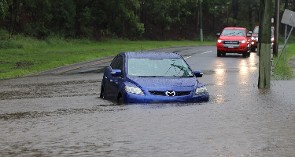Are you prepared for a wildfire?

Do you live in an area prone to grass fires or wildfires? Taking a few simple steps can help ensure the safety of those you love, protect your valuables, and make the claims process less stressful if the unexpected occurs.
Make an Evacuation Plan
Ensuring the safety of your loved ones is a top priority. Having a plan will help minimize confusion if a fire or other catastrophe occurs.
- Determine a designated emergency meeting location outside the fire or hazard area
- Create several escape routes from your home and community
- Make sure all household members are familiar with your evacuation plan
- Prepare a "go-kit" with important items like medication, emergency supplies, and important documents
Protect Your Home
Create a buffer between buildings and vegetation to slow the spread of fire.
- Zone 0 - Area within 5 feet of the building
- Remove debris from gutters, decks, and porches
- Limit combustible items like mulch or garbage cans
- Relocate firewood and lumber to zone 2
- Zone 1 - 5-30 feet from the building
- Remove all dead vegetation
- Trim branches that hang over your roof
- Create separation between vegetation and items like patio furniture and swing sets
- Zone 2 - 30-100 feet from the building
- Cut or mow grass to a maximum height of four inches
- Remove fallen leaves, needles, twigs, and branches
- Create at least 10 feet of clearance around wood piles
Consider Fire-Resistant Building Materials
When it's time to build or remodel, fire-resistant building materials could provide extra protection by slowing the time it takes a fire to spread.
- Fire-rated glass is tempered to minimize the spread of flames and smoke. Dual-pane windows double the time for a fire to enter through a window.
- Aluminum and steel siding are fire-resistant and withstand rain, wind, hail, and sleet.
- Fire-rated doors are constructed of material that slows or stops the spread of flames and smoke.
- Fire-retardant chemicals can help protect your home if it has wood siding, cedar shakes, exterior wood paneling, or other combustible materials.
An insurance company that cares about you and insuring the things you wish to be insured.
Get a Quote> Find an Agent>

